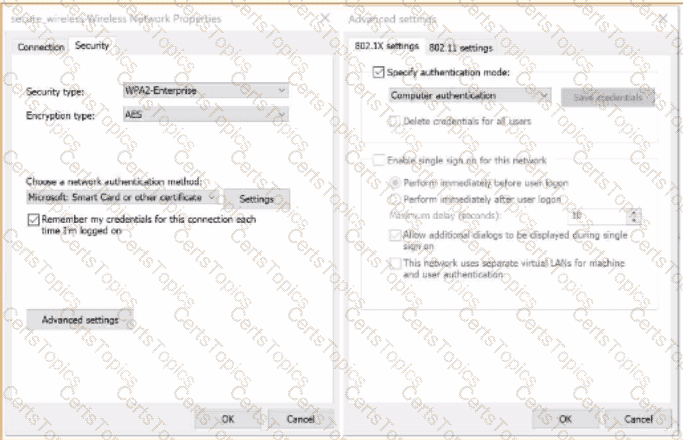A customer is using a legacy application that communicates at layer-2. The customer would like to keep this application working to a remote site connected via layer-3 All legacy devices are connected to a dedicated Aruba CX 6200 switch at each site.
What technology on the Aruba CX 6200 could be used to meet this requirement?
You must ensure the HPEAruba network you are configuring for a client is capable of plug-and-play provisioning of access points. What enables this capability?
Which feature supported by SNMPv3 provides an advantage over SNMPv2c?
A company is in the planning stages to migrate to all their wireless domain laptops from WPA2 from WPA2 EAP-PEAP to EAP-TLS with machine Authentication. The administrator is testing a new Group Policy (GPO) that was pushed to only a few windows domain Laptops. The policy will configure the wireless profile to perform machine and certificate-based authentication.
To support this new initiative the administrator also configured a new HPE Aruba Networking ClearPass 802.1X wireless service that only allows devices that successfully perform machine and certificate-based authentication. After successfully pushing the GPO, the Windows laptops are unable to join the configured ‘’secure_wireless’’ SSID as shown below.

Which configuration setting would resolve this issue?
A)

B)

C)

D)
